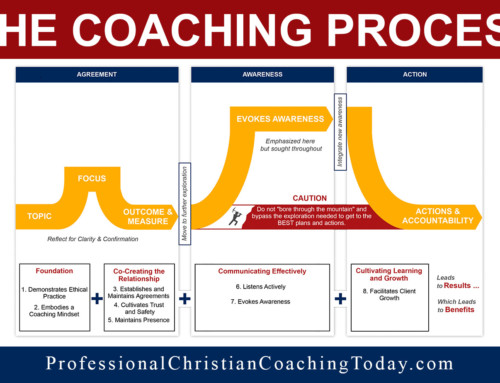People everywhere love a good story. Now we know why.
Scientific research reveals that, unlike other methods of communication, stories activate multiple areas of our brain, including the parts of our brains that control our emotions and sensory experiences, while PowerPoint presentations trigger only the language parts of the brain.
In fact, stories not only stimulate multiple areas of the brain, but when we immerse ourselves in a story, we begin to internalize not only the story but also the values associated with it. Consequently, one of the most effective ways to reshape values is through storytelling (Loehr 2007 [i]).
That’s why storytelling is such an effective coaching strategy. It helps clients picture themselves in a new story, one that reshapes their values and facilitates change. The more clearly clients can envision themselves in the story, the more likely the story can become real for them.
Liturgies, or Habits, as Storytelling
In his series, Desiring the Kingdom and Imagining the Kingdom, James K.A. Smith, makes a fascinating observation. He describes liturgies, or habits, as stories told by and told upon – our bodies, thereby embedding themselves in our souls, becoming part of the background that shapes how we perceive the world.
When we act out a new value through the repetition of a habit, or story, associated with that value—the value becomes a part of us.
Think of it this way. Values and habits go hand in hand, much like the connection of faith and works in the book of James: “In the same way, faith without works is dead. . . Show me your faith without works, and I will show you my faith by my works” (James 2:17-18). Values without habits are dead . . . Show me your values without habits, and I will show you my values by my habits.
A Coach-Approach to Change
By translating these research findings into practical coaching strategies, coaches can better support their clients, enabling them to experience lasting change in their lives and their relationships.
Here are some practical ways to get started:
Connect new behaviors to the senses.
- Pleasant sensory experiences, i.e., music, scents, taste, beauty, and more trigger the release of oxytocin, the bonding neurochemical, and reward the behavior neurochemically.
- How can the client pair the new behavior with a pleasant sensory experience?
- What can the client to do to improve the sensory environment where the new behavior will take place?
Immerse the new value in an environment.
- How can the client surround himself or herself with others who share the same value?
- How can the client integrate the new value into an environment? For example, a client who values exercise might establish a new habit by going to the gym every day after work.
- How can the client put himself or herself in an environment where the behavior is encouraged or modeled. For example, someone who wants to lose 30 pounds might decide to go to weekly Weight Watchers meetings.
Rehearse the new behavior.
- Our bodies, through our habits and actions imprint the value/vision on our hearts.
- Repetition creates deeper trenches in the neuropathways.
- Through repetition, the habit becomes automatic and happens without thinking about it.
By understanding the power of story, coaches can help their clients reshape their values, forge new habits, and know lasting change.
Free Coach Training!

Learn from the BEST Christian Coaches!
Whether you’re exploring Christian coaching, a brand-new or seasoned coach, this powerful resource will deepen your learning, skill, and effectiveness.




